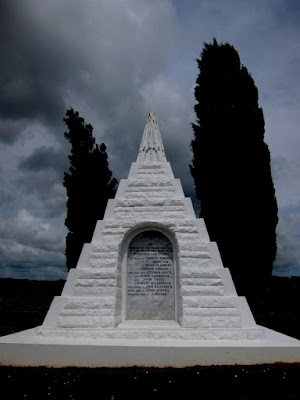Pokeno Waikato War Memorial

Unusual Waikato War memorial The land around Pokeno is rapidly disappearing under hideous tract housing. Other than this construction here is very little in this area to signify the momentous occasion when Imperial troops invaded the Waikato at the command of Governor Grey. On 12 July 1863 British troops crossed the Mangatawhiri River (just south of Pokeno). This river marked the aukati (boundary) line between the Auckland district and the “King Country” - the heartland of the Waikato under the mana (protection) of the Maori King, and its crossing was therefore regarded as a declaration of war. From: “The New Zealand Wars” - Philippa Werry p.28 The Pokeno memorial was not erected until 1902, and only commemorates the Europeans who fell. “Rather than a simple obelisk or stone cross, stonemason John Bouskill created an unusual pyramid, topped with a cluster ...




